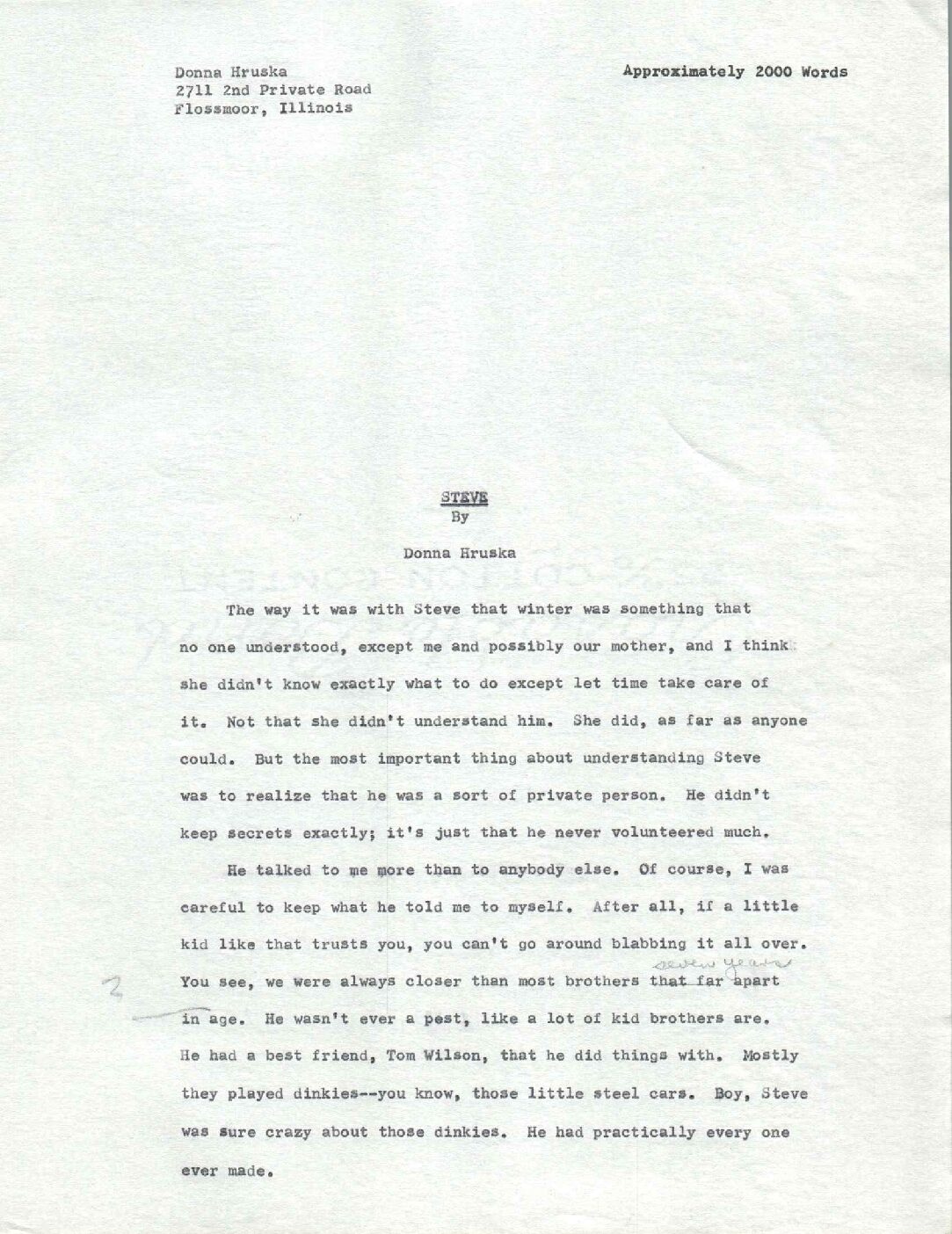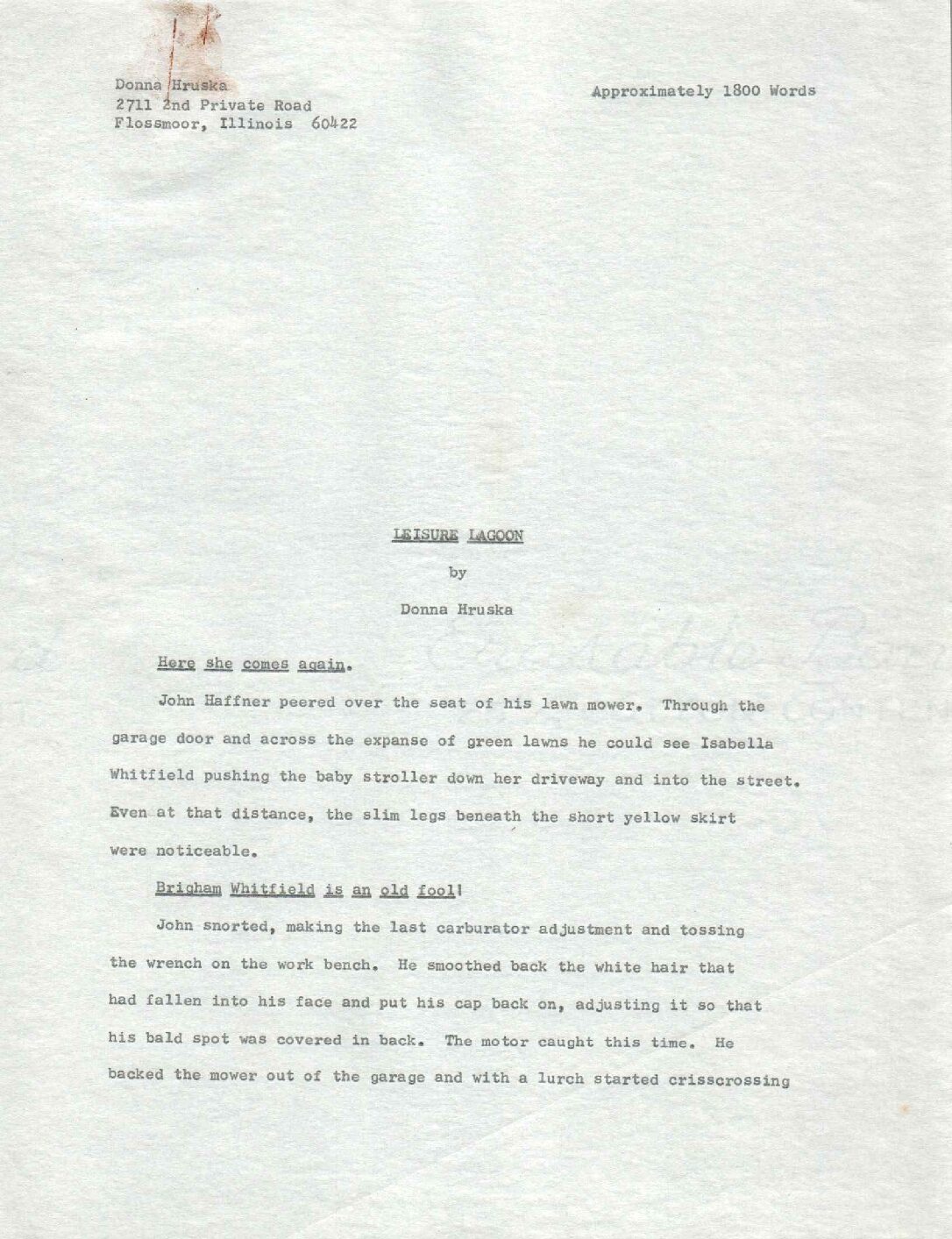By Donna Hruska
I just received a ticket to a spring fashion show.
Fund raising is very efficient these days. But somehow, in spite of the glamour of Las Vegas Nights and fashion shows, I can’t help feeling a little nostalgic about the way money was raised when I was a child in Southern Illinois. It wouldn’t have occurred to anyone at home to have a fashion show. There wasn’t a dress store in our little town to provide the fashions.
For people at home, fund raising consisted of serving food of some kind. The occasion was usually named after the main course to be served, such as a Chili Supper, Chicken and Dumpling Supper, Oyster Supper, or Chicken or Fish Fry.
People of all faiths from miles around came to the Catholic Church’s annual Chicken Fry, in spite of the fact that the rest of the year the Protestants and Catholics eyed each other somewhat suspiciously. The food was served outside from afternoon until late at night. After dark the church yard was lighted by bulbs strung from the church to the rectory and back again. Long tables made from boards and carpenter’s horses held big pans full of chicken, vegetables and salads of all kinds. Women in cotton dresses and aprons bustled about keeping the tables laden with food so that everyone could have “some of everything.” After eating ourselves nearly sick there were numerous other ways to spend our time and money. I particularly remember the Fish Pond, which was always a favorite with the children. It consisted of a table with a large screen behind it. We paid our nickle to the girl behind the table who gave us a fishing pole to dangle over the screen. Then two other girls behind the screen, with much giggling and peeking, put a small toy on the hook and gave the line a jerk so that we could pull in our “catch.” It never occurred to us that we could have bought the same toy in the dime store for less. The fun was in the fishing.
There was usually a raffle connected with a supper. The first prize was nearly always a handmade quilt. Quilts were not the expensive luxuries there that they are now in the city and suburbs. Everyone used them. (I never slept under a blanket until I went away to college.) But a new quilt was always a desireable prize, especially when it was an unusually lovely pattern. There would be a lot of discussion about who had done the quilting and the relative merits of the various patterns.
Most of the fund-raising was done by churches, but not all. In our town, the Cemetary Association had a picnic in the summer. (Perhaps I should explain that the Cemetary Association was formed to raise money for the upkeep for the town’s only cemetary.)
Their picnic was much like a church supper, in that they had food and a raffle. The one thing they never failed to have was Bingo. Long tables were set up with the prizes, which had been donated by merchants, displayed prominently in the center. There was always a grand prize of greater value for the last game of the evening. For a quarter the customer got a card and a pile of corn for covering the numbers as they were called. The more enthusiastic bingo players could play as many as four or five cards at a time. A shout of “BINGO!” was followed by general moans and statements like “I just had one to go,” or “I’d been waiting for B 4 for half the game.”
Suppers and picnics were fun for people of all ages, but if you were of courting age, nothing could compare to a box supper. For a week before the event, girls would be in a frenzy of planning and preparation. First there was the choice of a proper box to decorate. Choosing the prettiest color scheme and finding the crepe paper to carry it out were momentous decisions involving many trips to the store and comparisons with all the other girls.
Then, one afternoon, from a kitchen table littered with snips of crepe paper, musilage bottles and sissors, would emerge a veritable masterpiece trimmed in flowers, hearts, bows and ruffles. The day of the supper, girls (or their mothers if the girls were persuasive) fried chickens, baked cakes and pies and packed the box full of good things to eat.
Meanwhile the boys were saving their money. On the appointed night everyone showed up at the high school where the girls turned in their boxes and received a number. Of course, the idea was that the boxes were to be auctioned off anonymously to the boys and young men. The purchaser got to eat the supper with the girl whose box he had bought. In practice, there was usually a good deal of signaling and passing of information so that those who had a special friend would get the right box. No matter what arrangements had been made, no girl could avoid that mixture of dread and anticipation when the auctioneer picked up her box. What if the boy she liked didn’t bid? What if no one bid on it? What if someone she didn’t like bought it? Usually, the special boyfriend bought the right box, but if he didn’t, she had to make the best of it.
The girl whose box brought the most money was a heroine for the evening, much envied by the other girls. The prices paid were usually around one or two dollars, but sometimes a rivalry would develop between two boys and the price would sky-rocket. I can remember boxes being sold for over twenty dollars, which in those days was an even greater amount of money than it is now.
As I look back now, I realize that the charm of these fund-raising events in my childhood was not the food and games, but the fact that they were social occasions. Everyone in town was there to exchange news and views. For the young people there was always that clutch of excitement beforehand, that feeling that something exciting might happen. It rarely did, but that didn’t really matter. The fun was in the anticipation.
Oh, I shall continue to go to fashion shows, Las Vegas Nights and hospital auxiliary balls. All their causes are worthy. But now and then, I must confess a nostalgic yearning for an old-fashioned small town supper.

 Steve
Steve
Leave a Reply